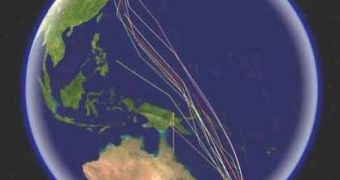Since the dawn of mankind, people have always looked upwards in admiration of the flocks of birds heading towards their summer or winter places, stretching wide across the sky, and flying purposefully in a single direction each year. How the animals managed to keep their direction and not get lost was a question few could claim to know the answer to, as it became a bit of a stretch to believe that each of the animals knew thousands of miles of landscape by heart. Now, investigators are starting to believe that the quantum world may play a crucial part in the birds' migration patterns, allowing them to guide the flocks following the planet's own magnetic lines.
Scientists now believe that an oxygen molecule, known as a superoxide, is able to combine with a light-sensitive protein inside the bird eye, and thus form an in-eye compass, which essentially lets the birds see where the Earth's magnetic lines are. “It connects from the subatomic world to a whole bird flying. That’s exciting!” Biphysical Journal Editor Michael Edidin said. His study hosted a new scientific paper detailing the finds in last week's issue. Avian magnetoreception expert Klaus Schulten, a biophysicist of the University of Illinois at Urbana-Champaign, has been the lead author of the paper.
According to the expert's theory, which was first published in 1978, biochemical reactions in the eyes of birds have as a direct effect the appearance of electrons spinning in certain manners when they are affected by magnetic fields. That is to say, it may be innate to the winged creatures to simply know the correct way the electrons in their eyes should be spinning and to become alarmed when their rotational patterns change. They would then strive to look for the direction that seems most familiar.
Despite the fact that the theory was met with a lot of skepticism when it first appeared, a growing body of pieces of evidence accumulated over the years shows that the quantum entanglement system that is formed in the eyes of birds is so complex, that physicists will need at least a few more decades before creating systems that could rival with it. Additionally, biologists have found molecular pieces of evidence that the system exists, and have recently identified the oxygen as one of the main elements that cause the quantum entanglement.
At this point, no one in the research community can say for sure how birds perceive the magnetic fields. Some say that they see them as dots at the edge of their vision, while others are convinced that the winged creatures see colors or hues. However, there are those who believe that the animals are simply flying towards the light, Wired reports.

 14 DAY TRIAL //
14 DAY TRIAL //